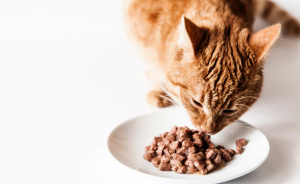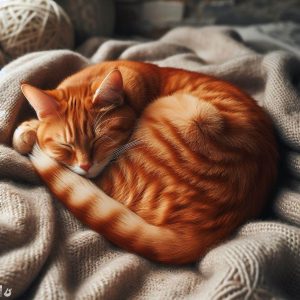Food. It’s one of life’s great pleasures. But for some cats, food becomes more than just a source of nourishment – it becomes an all-consuming obsession. My cat is obsessed with food. As a cat owner, you’ve likely noticed signs of food-motivated behavior in your kitty. But when does a healthy appetite cross the line into unhealthy fixation?
In this comprehensive guide, we’ll explore the science behind food obsession in cats, look at the causes, and provide actionable tips to curb extreme food-seeking behaviors for a happier, healthier pet.
My name is Lucas and I want to share my experience dealing with my cat Shadow’s obsessive food begging behavior. Like many cat owners, I was struggling to understand why Shadow acted so obsessed, vocal, and demanding around mealtimes.
After researching solutions online and consulting my veterinarian, I’ve successfully curbed Shadow’s food obsession using positive reinforcement training and lifestyle changes.
Understanding Food Obsessed Cat Behavior
Many cats beg, meow persistently, or exhibit other food-motivated behaviors. But when does normal feline food interest become an unhealthy obsession? Here are some signs your cat may have an obsessive fixation on food:
- Constant vocalizing and begging around mealtimes – Loud meowing, chirping, following you, lead head butting when they think it’s time to eat
- Aggressive behavior around food – Attacking feet, scratching, nipping, food stealing
- Insatiable appetite – Never seems full, acts starving, gobbles food extremely quickly
- Obsessive about food locations – Scratching at pantry or refrigerator doors, attempting to get into food containers or the garbage
- Difficulty self-regulating – No sense of fullness, resulting in overeating or vomiting if given free-choice food access
These behaviors originate from your cat’s natural food-seeking instincts. But in food obsessed cats, that instinct goes into overdrive.
Common Causes of Food Obsession in Cats
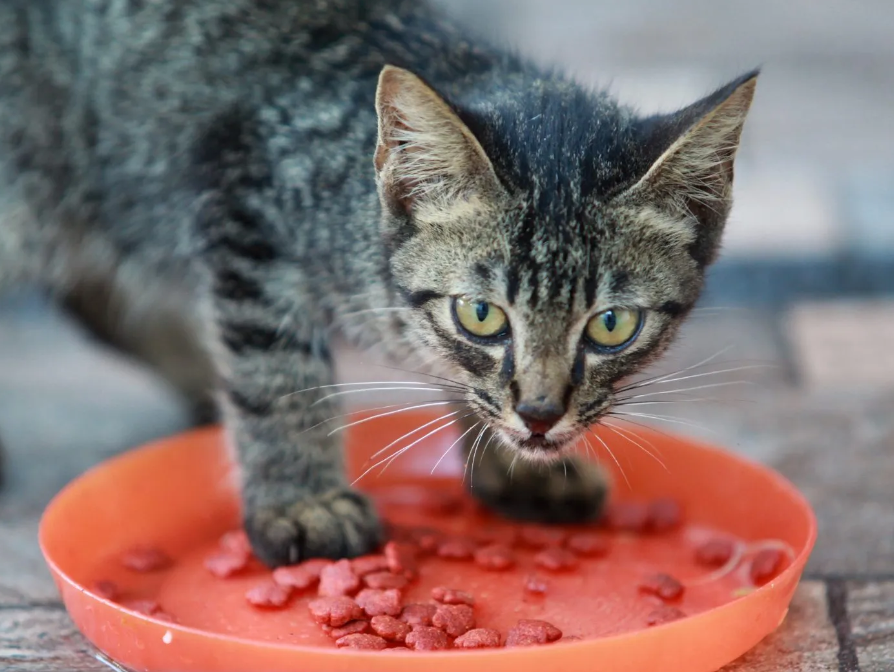
There are a few key reasons why cats become overly food motivated:
Medical Issues
Health conditions like diabetes, hyperthyroidism, or parasites can cause exaggerated hunger. Consult your vet to rule out underlying illness.
Early Weaning or Nutritional Deficiencies
Kittens removed from mom too young often become food-obsessed. Nutritional deficiencies may also physically compel them to overeat.
Breed and Genetics
Some breeds like Siamese and Bengal cats tend to be more vocal and demanding about food. Genetics impact food drive and self-regulation.
Learned Behavior
When owners give in to begging, cats learn it gets rewarded with food. Cats trained with food treats can become conditioned to expect constant treats.
Stress, Anxiety, or Boredom
Like humans, cats may stress eat or use food as entertainment. A lack of mental stimulation and stress can generate food-seeking behaviors.
Training a Food Obsessed Cat Using Positive Reinforcement
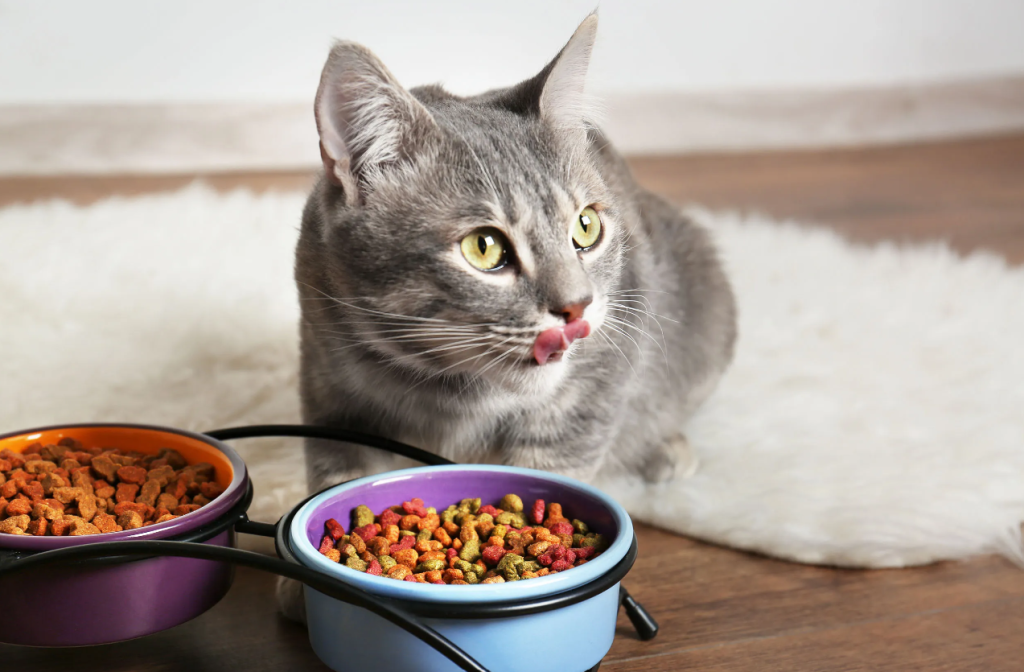
The most effective way to curb food obsession is training using positive reinforcement. This trains your cat to earn food through calm, polite behavior instead of demanding actions. Here’s how to implement positive reinforcement training:
Set Up Scheduled Feedings
- Feed cats 2-3 times a day at consistent times rather than free-feeding
- Pick up food bowls in between meals
- Start portion control if your cat is overweight
Having distinct mealtimes prevents your cat from fixating on food all day.
Ignore Attention-Seeking Behaviors
- When your cat begs, meows, or displays other food-seeking antics, completely ignore them
- Reward and give treats only when your cat is quiet and calm
This teaches them calm behavior, not demanding actions, will earn rewards.
Use Food Puzzles and Dispensing Toys
- Feed meals in interactive toys like food puzzles, wobbling treat balls, etc
- Make your cat “hunt” and work for food to satisfy instincts
Mental stimulation curbs boredom and models natural hunting behaviors.
Offer Alternate Rewards
- Redirect your cat’s focus by offering play, petting, or catnip when they start food-seeking
- Offer treats during and after play sessions
This replaces food rewards with other forms of positive reinforcement.
Clicker Training
- Use clicker training to reinforce calm, patient waiting and other polite food-related behaviors
- Click and reward with treats when your cat waits quietly, then gradually shape the desired behavior
This precisely marks good behavior so your cat knows which actions earn rewards.
Be persistent and consistent using these techniques. It may take weeks or months to see lasting behavior changes. But gradually your cat will learn calmness, rather than demanding behavior, leads to their desired rewards.
4 Lifestyle Changes to Curb Food Obsession
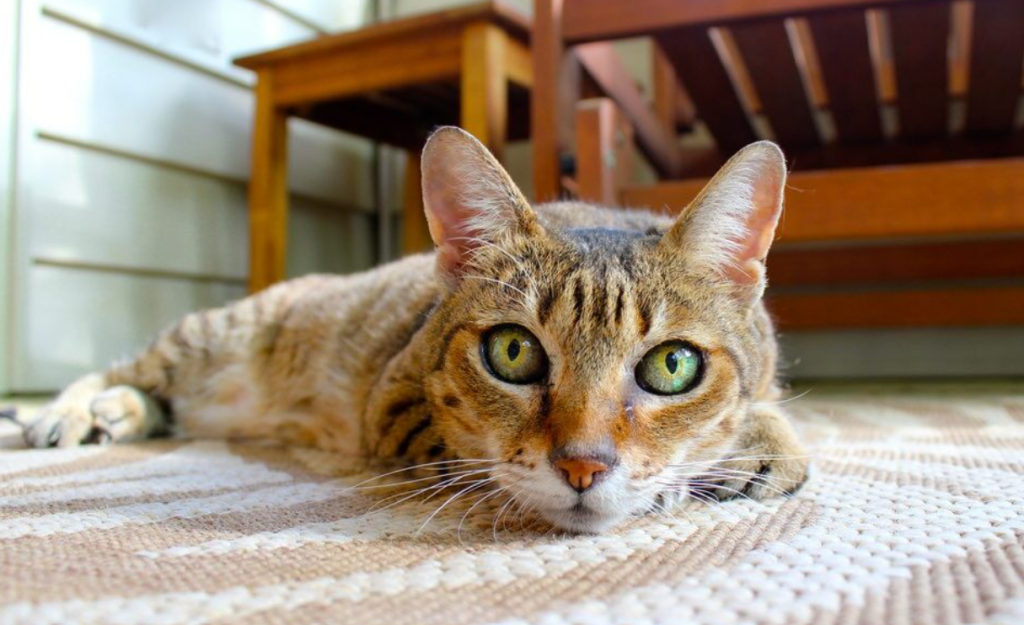
In addition to training, making a few lifestyle adjustments can reduce your cat’s food fixation long-term:
Add Environmental Enrichment
- Rotate new toys to spark curiosity and exercise prey drive
- Use cat trees, shelves, and perches to add vertical space to explore
- Plant cat grass or catnip to introduce new smells and textures
Preventing boredom and inactivity helps curb stress-eating behaviors.
Manage Portion Sizes Carefully
- Consult your vet for ideal calorie intake based on your cat’s needs
- Weigh food instead of “eyeballing” to confirm proper portions
- Limit treats and monitor for weight gain
Careful calorie control prevents obesity and satiates your cat.
Rule Out Stress Triggers in Your Home
- Minimize noise, introductions of new pets or people, environment changes, or disruptions in routine
- Ensure your cat feels secure with places to perch and hide when needed
Stress and anxiety can exacerbate food-seeking behaviors.
Consider Prescription Diet Foods
- Veterinary diet foods are designed to increase satiety and be highly palatable
- Options like Hills m/d or Royal Canin Calm foods can reduce begging
The right food textures and ingredients optimize satiety.
Slowly implementing these lifestyle changes reduces the triggers and reinforcement your cat may associate with food.
3 Most Common Questions About Curbing Food Obsession
Here are answers to some of the most frequently asked questions cat owners have about minimizing food fixation:
How long does it take to see positive changes in food obsession?
It depends on the individual cat, but most pet parents see gradual improvements in begging, vocalizing, and demanding behaviors within 2-6 weeks. However, it takes consistency and commitment over months to cement long-term behavior changes.
Will my cat starve or suffer if I don’t give in to begging?
No. Healthy cats fed proper portion sizes will not starve. Ignore attention-seeking behaviors and reward calmness instead. You may get some initial pushback, but your cat will adjust.
Is my food-obsessed cat bored? How can I provide enrichment?
Very likely yes. Prevent boredom by rotating new toys frequently, using puzzle feeders and treat balls to make your cat “hunt” for food, and creating an engaging environment with vertical space, cat grass, and access to windows or outdoor enclosed “catio” spaces.
Final Tips for Curbing Your Cat’s Food Obsession
Here are a few final pointers to help curb your cat’s food-seeking behaviors for good:
- Consult your vet to address potential underlying medical issues first.
- Be patient and consistent – this training takes time but pays off long-term.
- Reward calm behaviors – use positive reinforcement to shape polite food manners.
- Add enrichment – keep your cat’s environment stimulating.
- Stick to a schedule – regular, portion-controlled mealtimes are key.
With a customized positive reinforcement training plan, environmental changes to add enrichment, vet guidance, and your dedication – you can help your food-obsessed furry friend develop a healthier relationship with food. My cat Shadow is much calmer and more content after I implemented these changes. I hope these tips help you and your feline companion find food fixation relief too!

